► Full BMW M4 CSL road test review
► 100kg lighter than M4 Competition
► Limited to 1000 cars, 100 for the UK
A burly swell of torque swooshes the BMW M4 CSL down the road, a big fat steering wheel points its king-size grilles at an apex, the front tyres grip hard and the rears smear subtly wide on the exit like butter on toast. So far, so good.
And so… M4. Also good – the regular BMW M4 Competition is a brilliant driver’s car. But this is no ordinary M4: this is a CSL. Only 1000 will be built, 100 in right-hand-drive for the UK, all of which are sold. Over our first hundred odd miles cutting across Midlands A- and B-roads, however, it feels an awful lot like the M4 Competition long-termer we ran on the Our Cars fleet in 2021. Again, no bad thing. But a CSL badge on a BMW carries a fair bit of significance.
What’s in three letters?
To BMW fans, quite a lot. The box of CSL badges and pot of bootlid glue don’t come down from the shelf all that often at M Division HQ. There have been two CSL models in BMW history: the original 3.0 CSL touring car homologation special (and its ‘Batmobile’ aero kit) in the early ’70s, and the E46-generation M3 CSL in 2003.
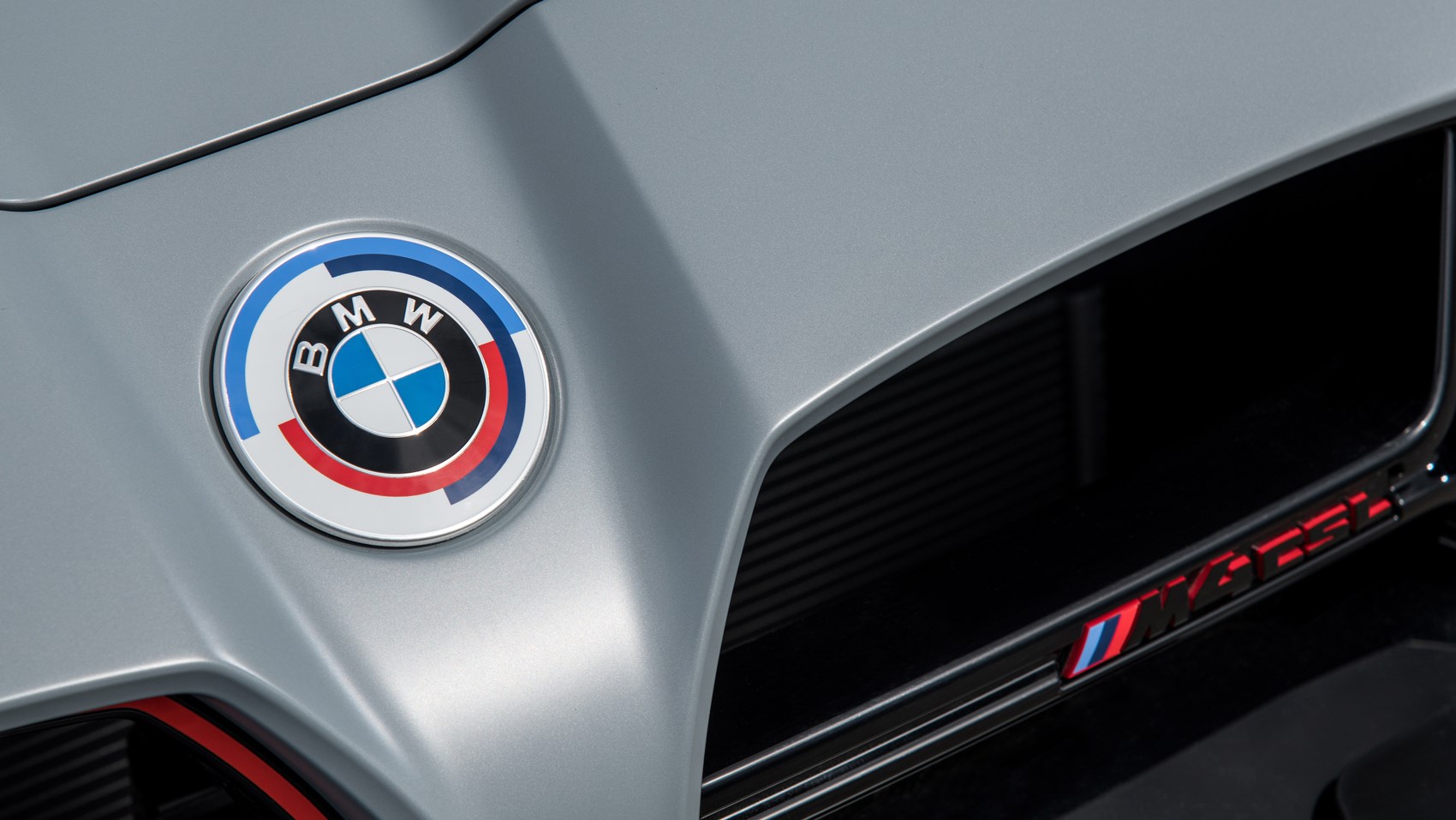
Both have gone down as all-time classics (although the M3 CSL’s reputation has waxed rather than waned; it experienced a muted reaction at launch, an M3 that was less usable and more expensive. Now a cult hero car, of which 1883 were built, values are topping £90k).
Badge aside, what separates the M4 CSL from other M4s?
This new Competition Sport Leichtbau (formerly ‘Coupe’ rather than Competition but BMW’s altered the tag, perhaps to give it licence to apply the badge to different models in the future) coincides with M Division’s extended 50th anniversary celebrations and costs £128,820. That’s a £49k premium over the M4 Comp, in return for a 100kg weight reduction to justify the ‘L’ bit of the badge and a 39bhp increase in power. Torque is the same 479lb ft as before, albeit spread 450rpm broader between 2750 to 5950rpm.
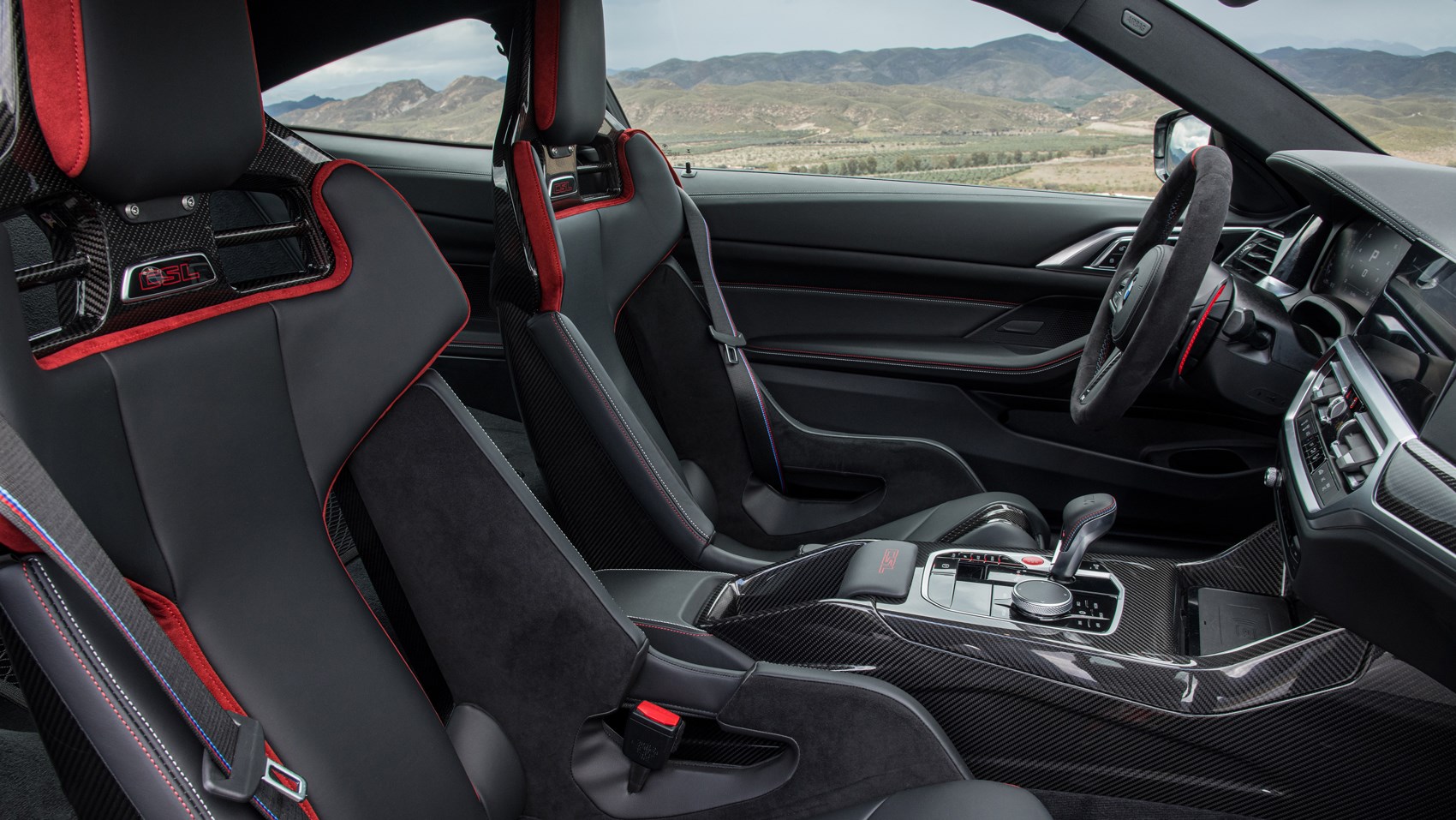
Its 100kg weight saving comes from bodywork (carbon bonnet, roof and bootlid, with a ducktail shape to echo the E46 CSL); wheels and brakes (with forged alloy wheels and carbon-ceramic brakes as standard); a titanium exhaust system; and much of those controversial front grilles being deleted, allowing extra cooling airflow in.
As standard the front seats are lightweight fixed-back carbon shells although this test car has optional slightly heavier heated and electrically adjustable seats.
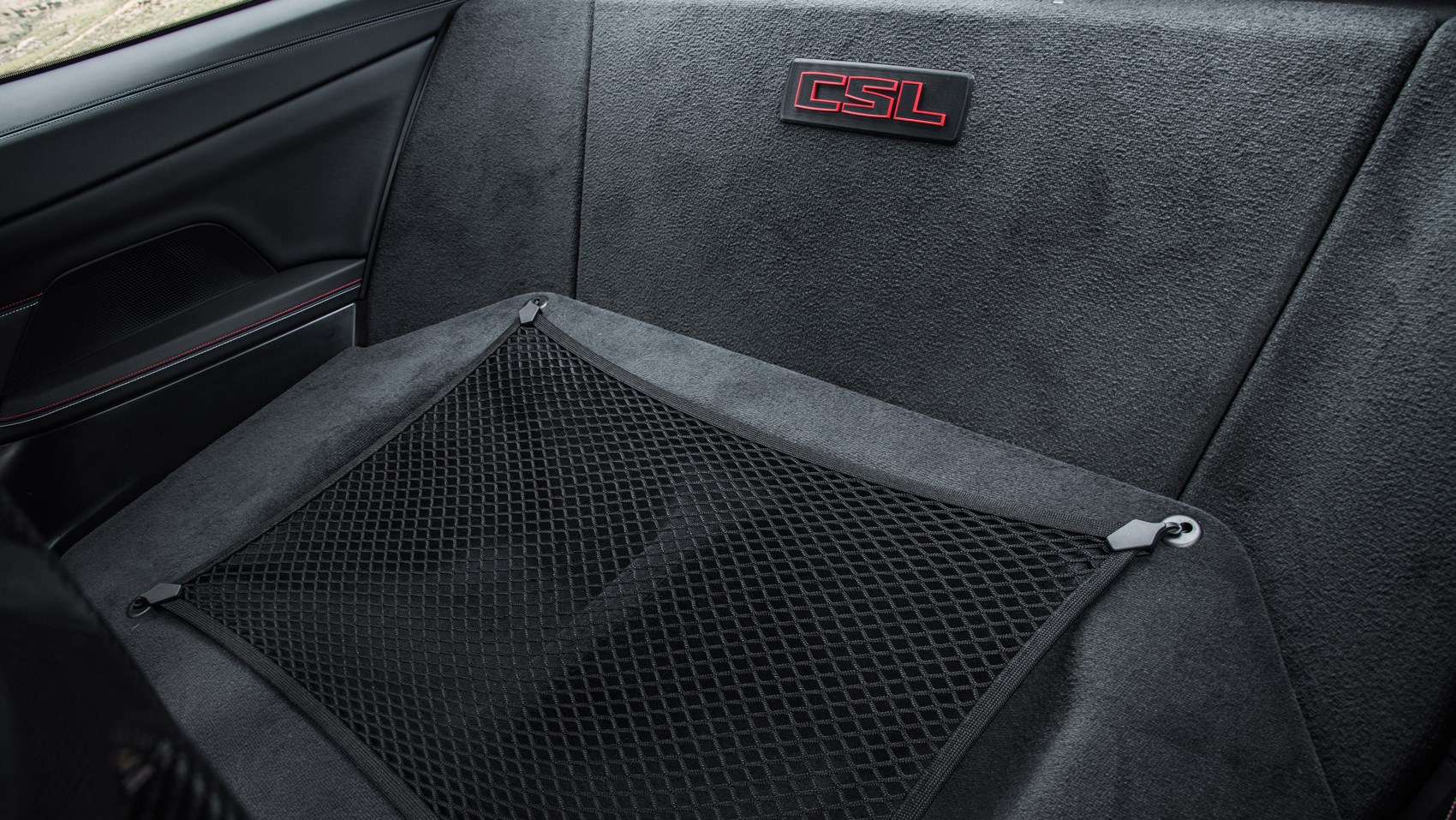
To save further kilos there are no back seats at all – just a flimsy parcel-shelf style cover over the bodyshell’s wells where the rear chairs would normally be (with stickers warding you off putting heavy bags, or tyres for trackdays, on top). Oddly, the leather-clad rear armrests, on which no elbow shall ever rest, remain.
Lift the carbon bonnet and there’s a huge cast aluminium strut brace across the engine compartment for added stiffness. While the M4 Competition is available as either rear- or all-wheel-drive, the CSL is rear-drive only to save further weight and emphasise its purist ethos.
There are suspension tweaks too, with auxiliary springs front and rear, new anti-roll bars, more camber at the front and a stiffer rear subframe. The whole car rides 8mm lower than a regular M4.
No thorough re-engineering overhaul, then, but a promising mix nonetheless: the regular M4 Competition already defies its weight to be a superbly agile car. To lose 100 kilos from that mix and gain extra body stiffness and extra poke too could make this something really special.
And does it?
You do feel the changes through the steering, which incidentally is conducted via a fluffy wheel clad with the thickest-pile alcantara I’ve ever experienced (which no doubt will become pretty grim after a few-score thousand miles like most alcantara wheels). The M4 Comp already has a front end that grips like day-old Weetabix to a cereal bowl and the CSL is even more responsive. The tiniest bit of lock and it dives for the apex like a goalkeeper for the top corner at full stretch, no doubt aided by the strut brace’s extra rigidity and the lighter wheels and brakes.
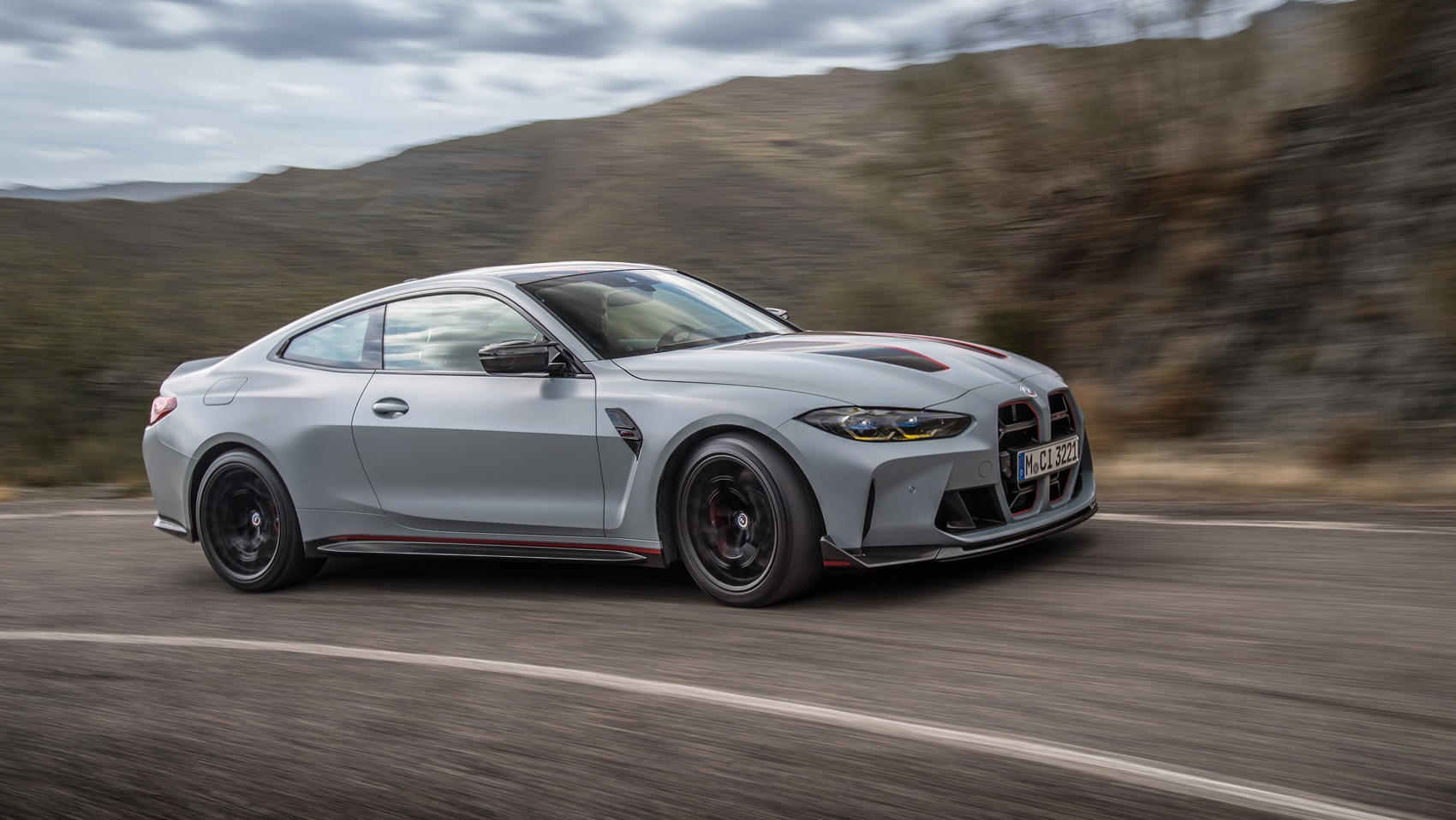
Specially developed sticky Michelin Cup 2R tyres are standard, although this particular car is on more all-weather-friendly but still very grippy Michelin 4S tyres. Were it fitted with the 2Rs it would surely annihilate a twisty road, just as it did the Nurburgring on its way to the fastest laptime a BMW production car has yet recorded.
Even on the 4S tyres traction is enormous. It’s only when you begin to relax the traction control’s 10 levels (the upper five of which are specific to the CSL) that you realise how hard the software’s been working to keep the 479lb ft in check. There’s enough poke on tap to unstick the back end in most gears at most speeds, and it feels a smidge spikier and less forgiving than the M4 Competition. Nonetheless, it’s still a relatively benign car to be a hooligan in. Bet it’s fun on track.
Does it feel fast?
Sure does. The broader spread of torque contributes to a remarkable sense of urge in the CSL’s mid-range acceleration. (Although you’re doubtless feeling the extra urgency more from the slimmer kerb weight than the fatter torque curve.) It’s a real sledgehammer – although that does give the twin-turbo straight-six’s delivery a slightly diesel-esque feel, where you feel inclined to drive it on that mid-range swell of torque rather than chase every redline, a little like the previous F82-generation M4.
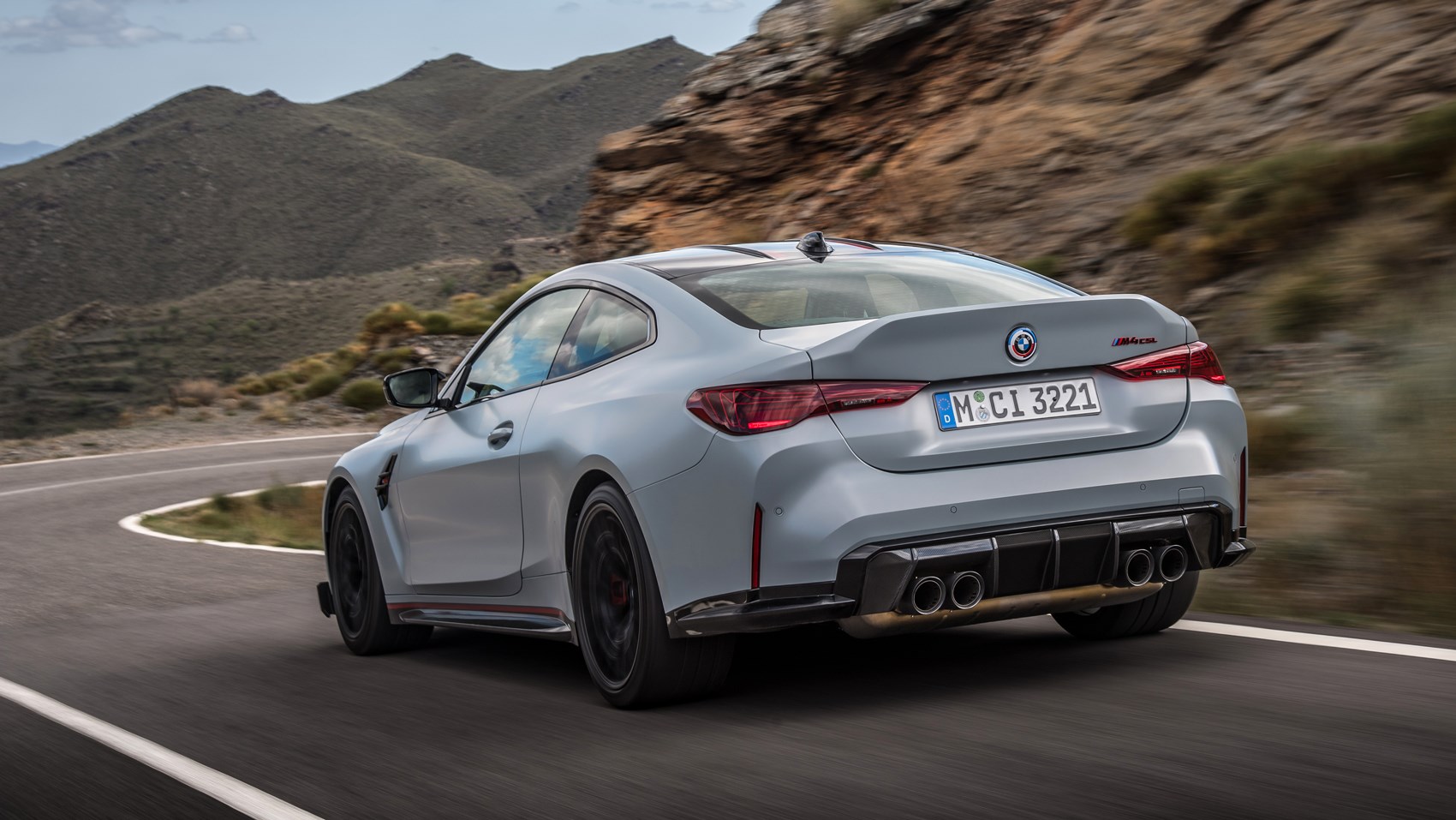
Since the back of the interior’s stripped out, is it hard work on the road? Noisy, uncomfortable?
Actually, no. Road noise isn’t bad at all and refinement’s actually quite cushy, I’d say.
And ride comfort is quite remarkable. In the dampers’ softest Comfort setting body movement can become a little wayward but in middling Sport and even Sport Plus, which is suggested for track use only, it does a serene job smoothing away bumpy surfaces. You feel all the unsprung mass benefits those light wheels and brakes yield, and you can see how it yumped and kerb-hopped its way to a fast Nurburgring laptime.
What kind of rivals does the M4 CSL have?
The obvious modern rival is Alfa Romeo’s even more evocative (and equally sold-out) £153k Giulia GTA, also with two seats and a track-focused nature. Without driving the two back to back, the BMW’s handling feels more polished but subjectively it lacks a little of the Alfa’s sense of occasion.
Jaguar no longer makes its similar-in-ethos Project 8. The ultimate benchmark is Porsche’s 911 GT3. Perhaps it isn’t a totally fair fight: the 911 is a bona fide sports car rather than a modified four-berth passenger car but it is comparable on price, does more with less power than the M4 CSL and has much of the same ethos; in many ways GT3 is to Porsche as CSL is to BMW. The 911 GT3 has a busier ride than the M4 but feels the more precise driving tool, and has the more characterful engine plus the option of a manual gearbox should you wish.
Looking backwards into BMW’s back catalogue, the new CSL might share its name with 2003’s four-seat M3 CSL but in ethos and direct lineage, it’s closer to the stripped-out, extreme M4 GTS of 2016 (which was a little too exciting for its own good) and, before that, 2011’s any-colour-you-like-as-long-as-it’s-Fire-Orange M3 GTS. That too was a two-door, untamed M car with a 30bhp power hike and a crash diet. Both the GTS cars had a touch more theatre and more of a racecar vibe than the new CSL, but the new car has more performance, more polished handling and would be easier to live with than its forebears.
Mind you, subjectively speaking, there’s something right in the proportions and appearance of the old M3 CSL and to a lesser extent the M3/M4 GTS models that doesn’t come across so much in the new M4 CSL. It has purpose to throw away with its yellow tinged lights, broad carbon chin spoiler and red-ringed grilles but it’s unlikely to age quite as elegantly.
BMW M4 CSL: verdict
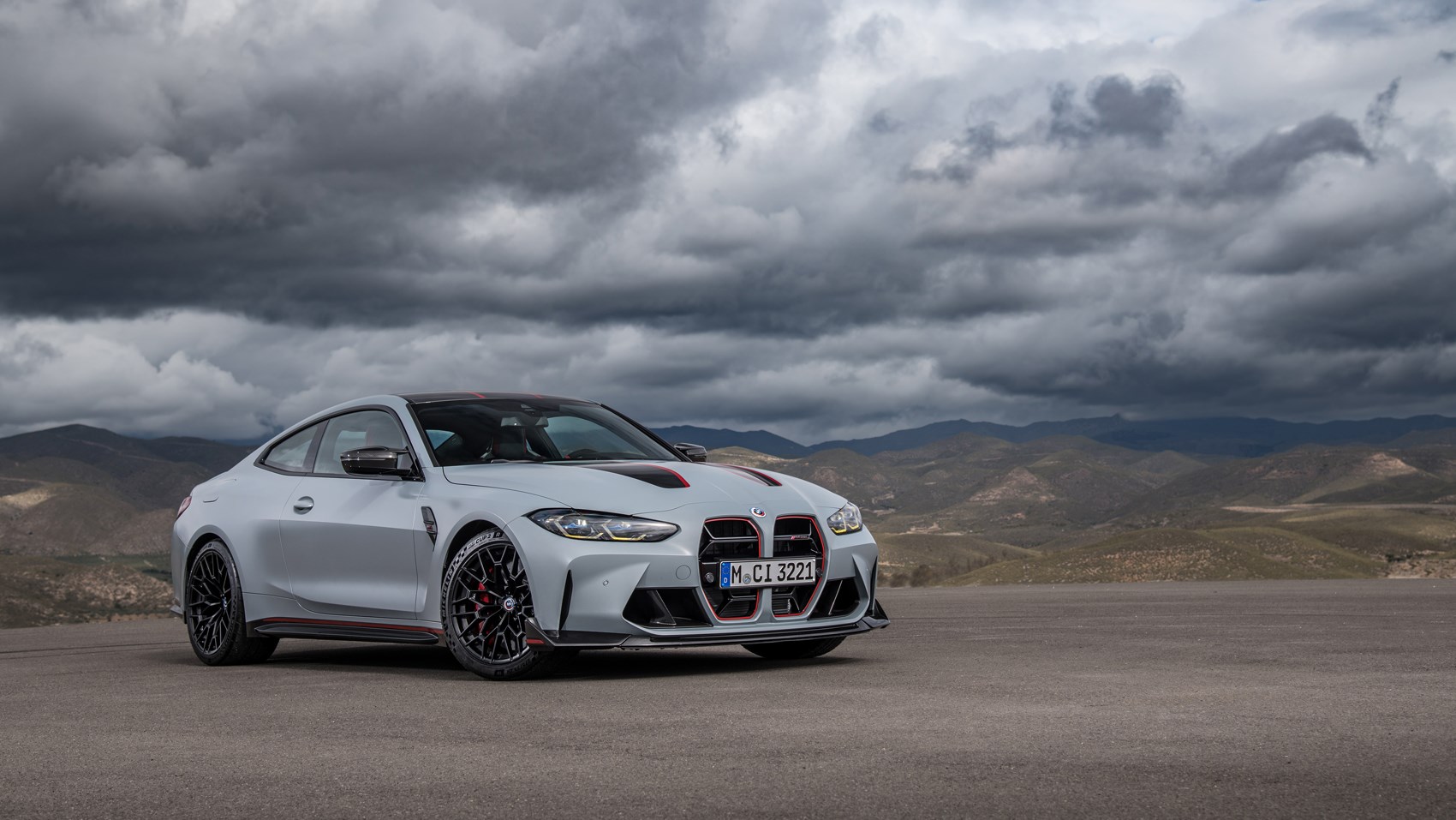
Perhaps if there was an M4 Comp here to drive back to back, the difference between that and the new CSL would be easy to feel but for the majority of miles it feels broadly similar to the last time I drove a ‘normal’ M3/M4, a few months ago.
But then we happen upon The Road. Every acid test in one undulating stretch: straight-line drags, fast flicks, tight hairpins and tightening multi-apex compound curves. The M4 CSL monsters it. Its front-end grip, big torque and throttle adjustability make it simply mighty here. And all with a front-engine, rear-drive hairy-chested muscle car balance about which there’s much to like. It’s truly impressive, and exciting.
Away from The Road, I’m not convinced it gives bigger goosebumps than the regular M4 to wear those three letters with complete confidence – but then people felt the same way about the M3 CSL at launch and it’s gone on to become a modern classic. On the right road, at the right time, the M4 CSL does have the credentials to put those letters after its name.